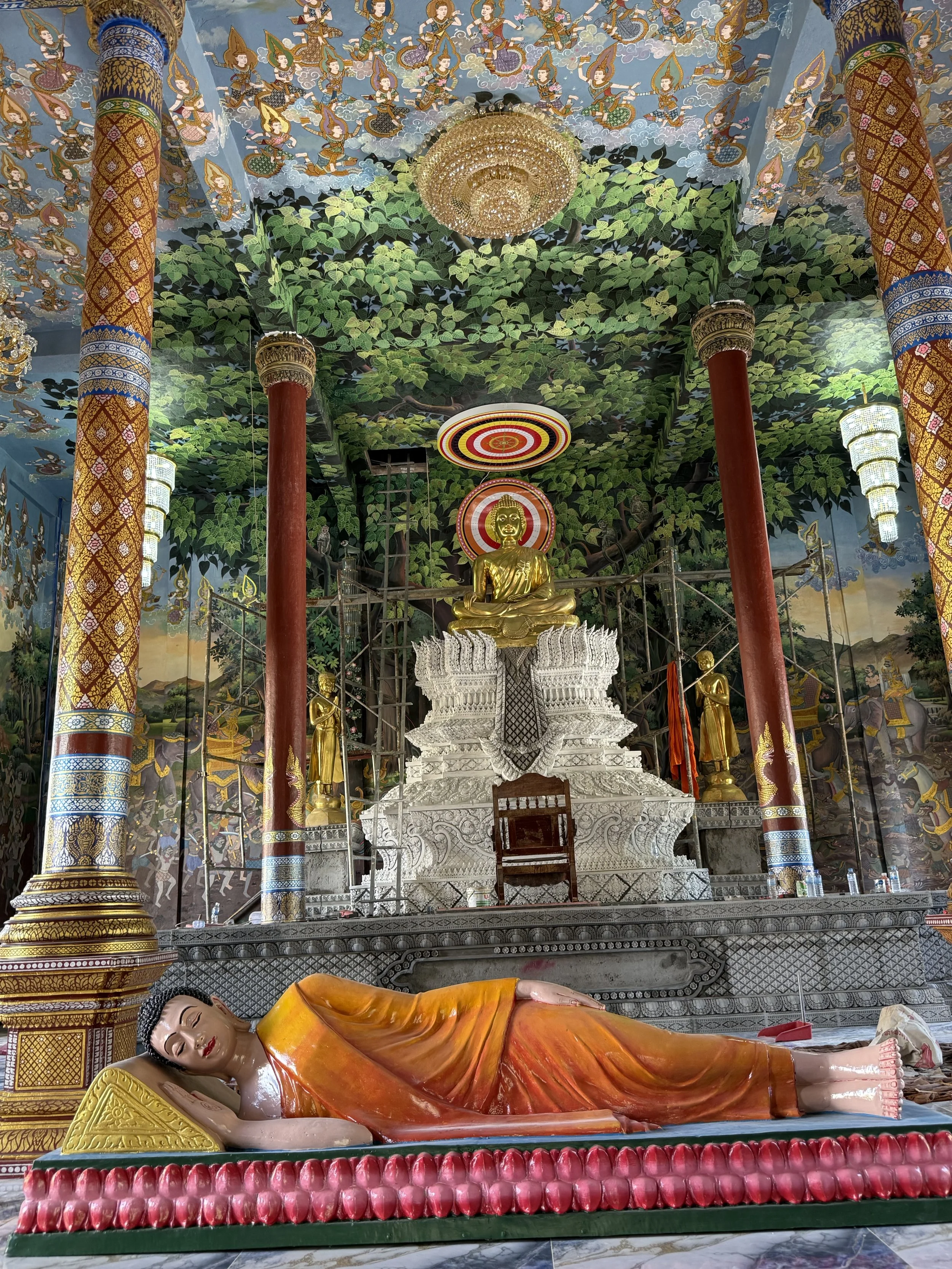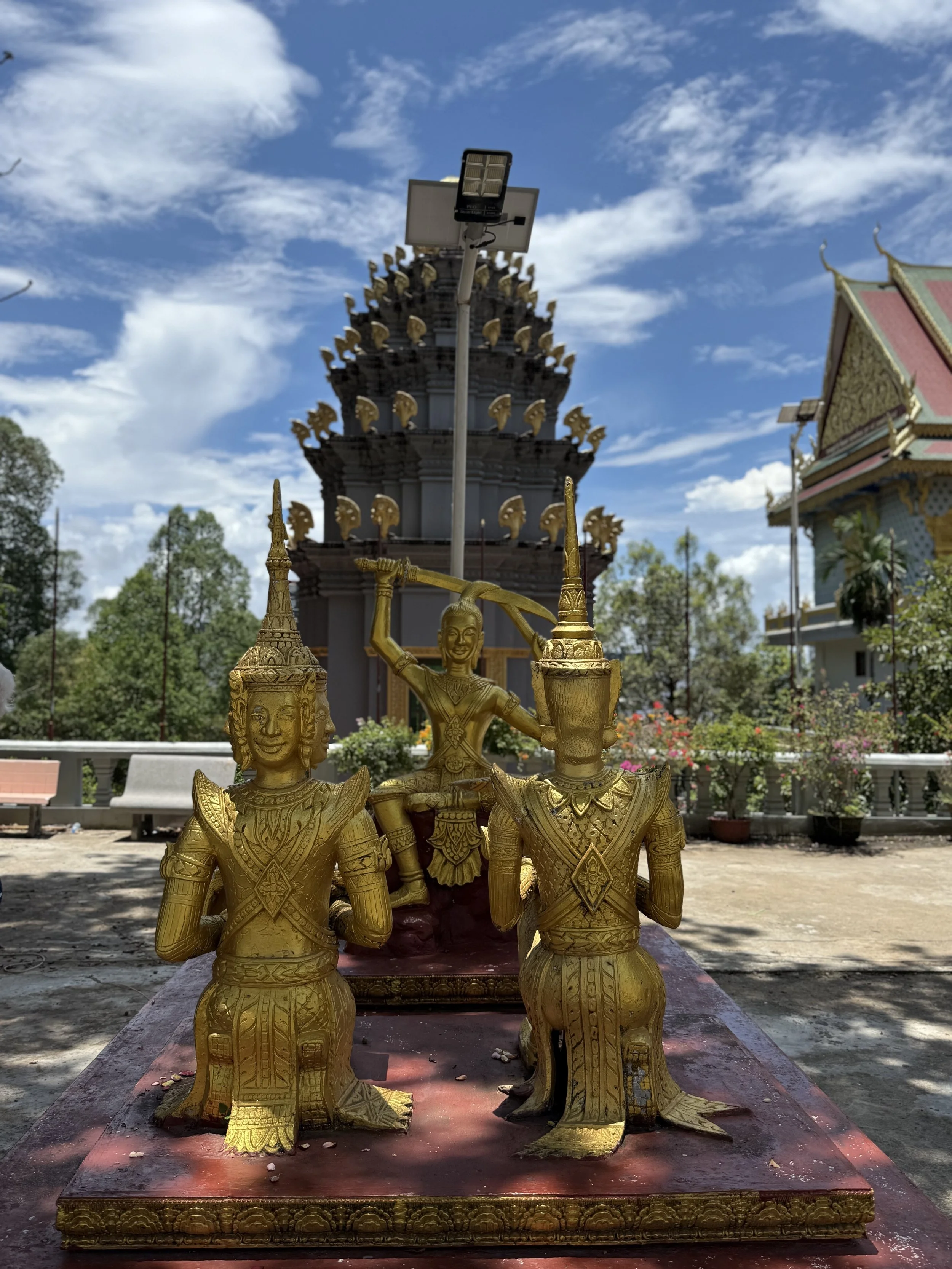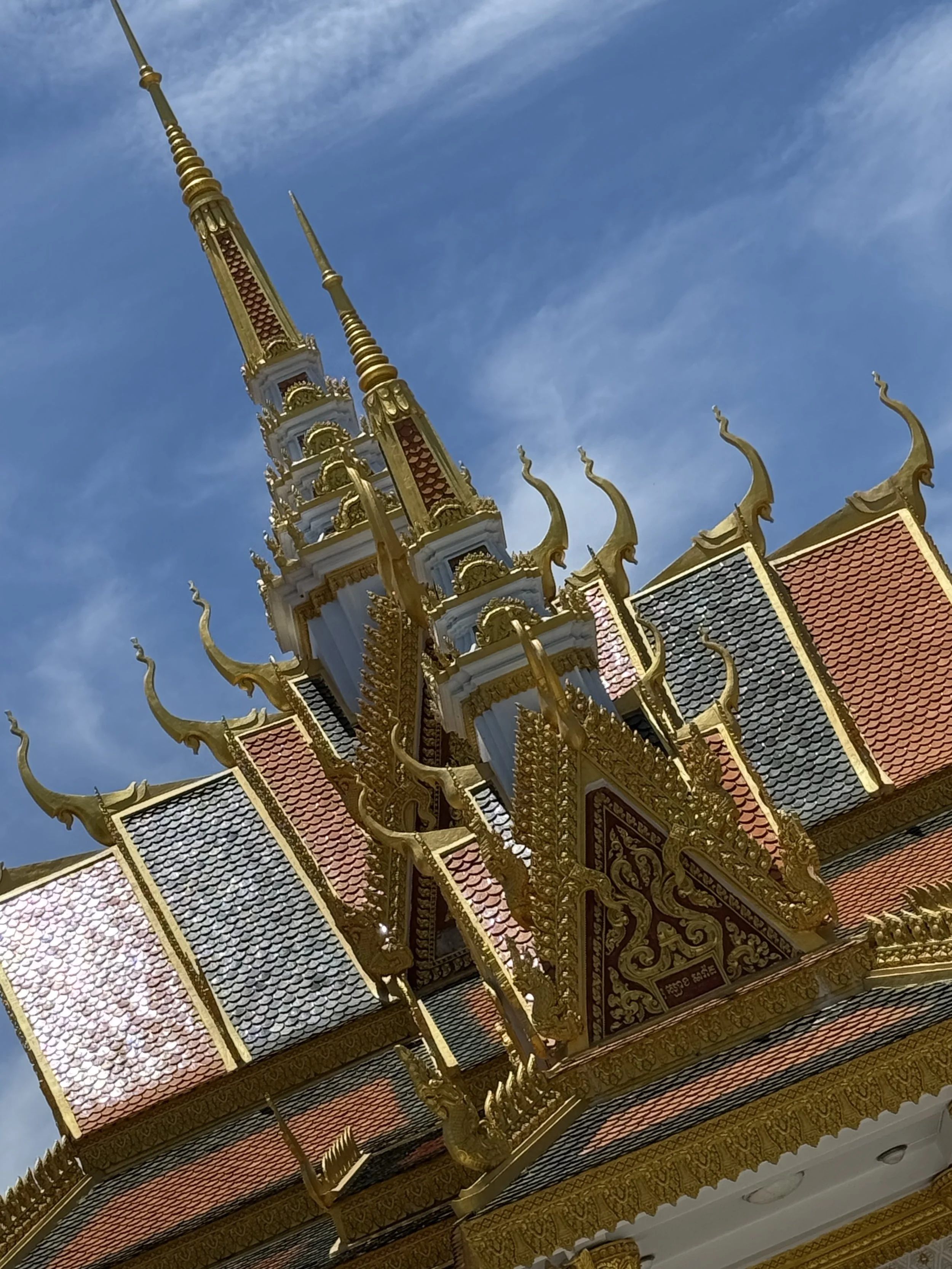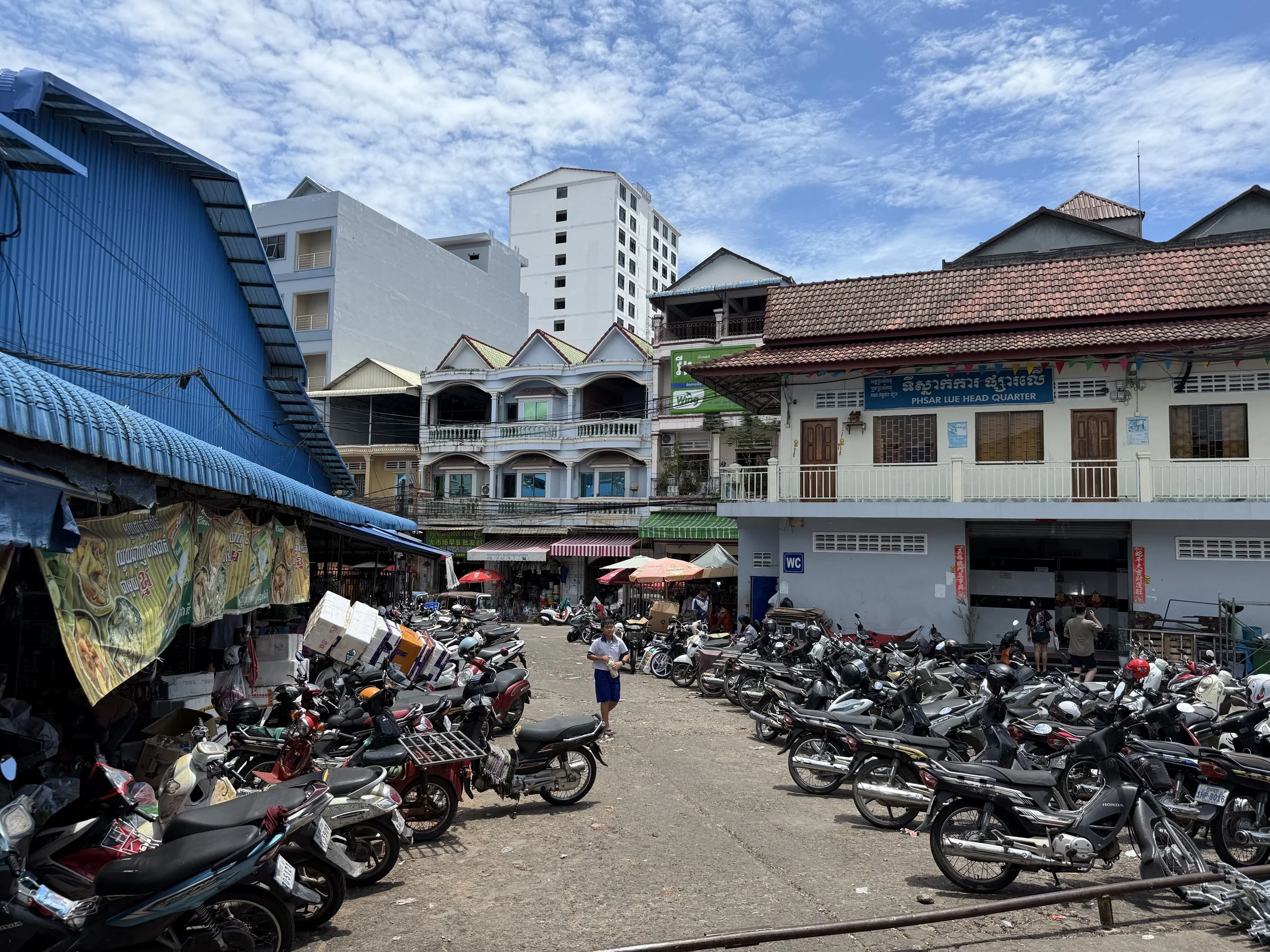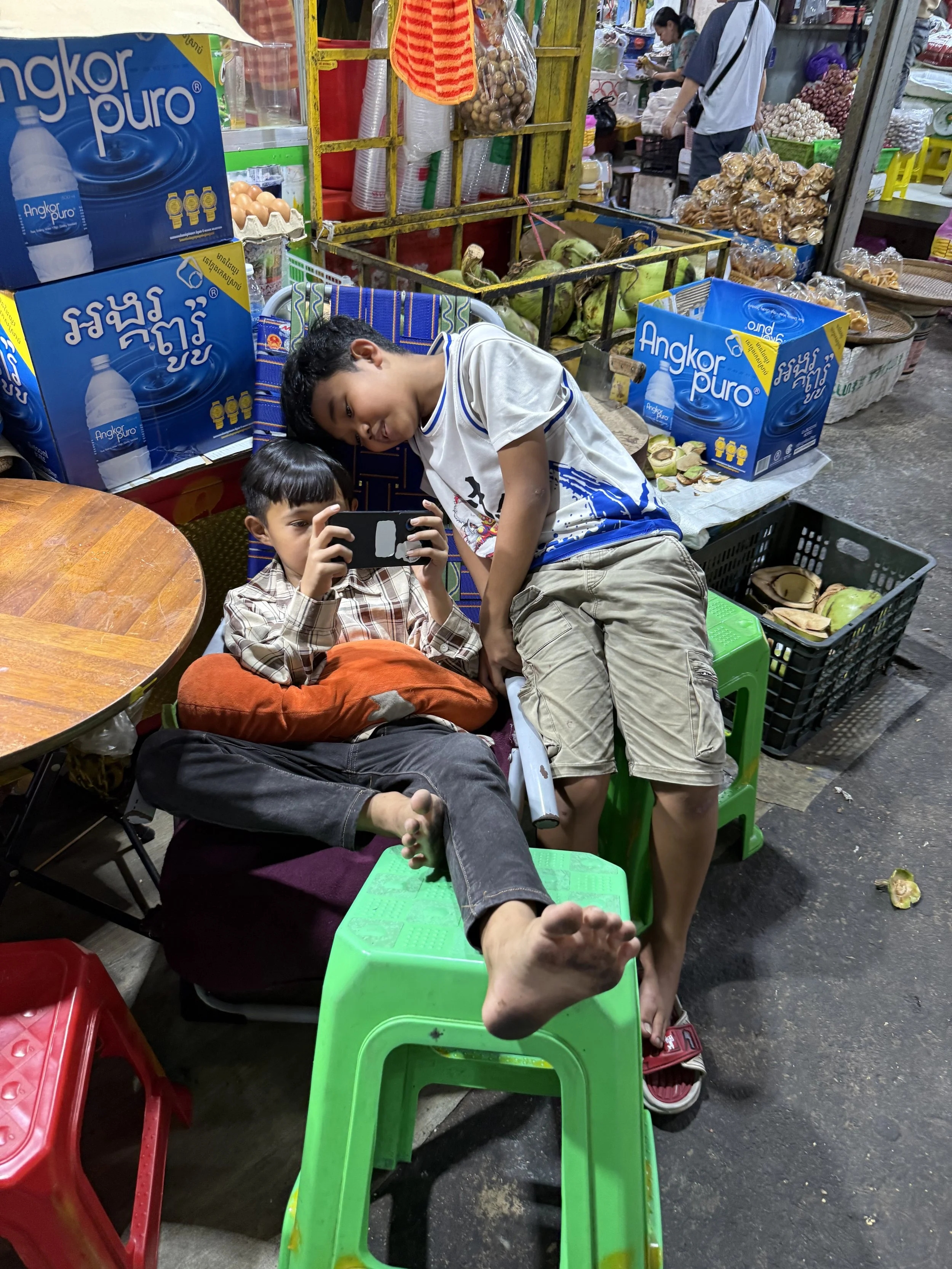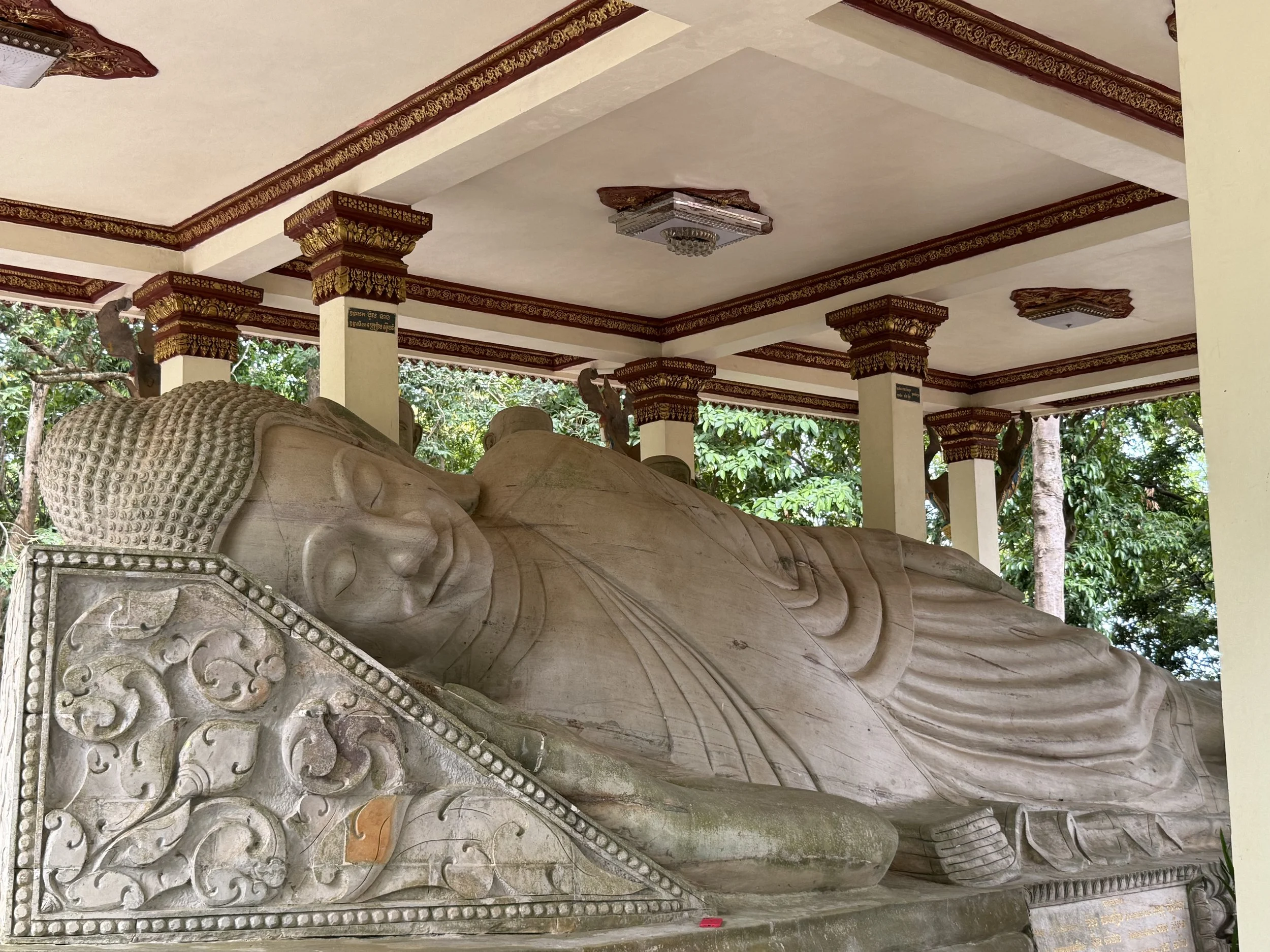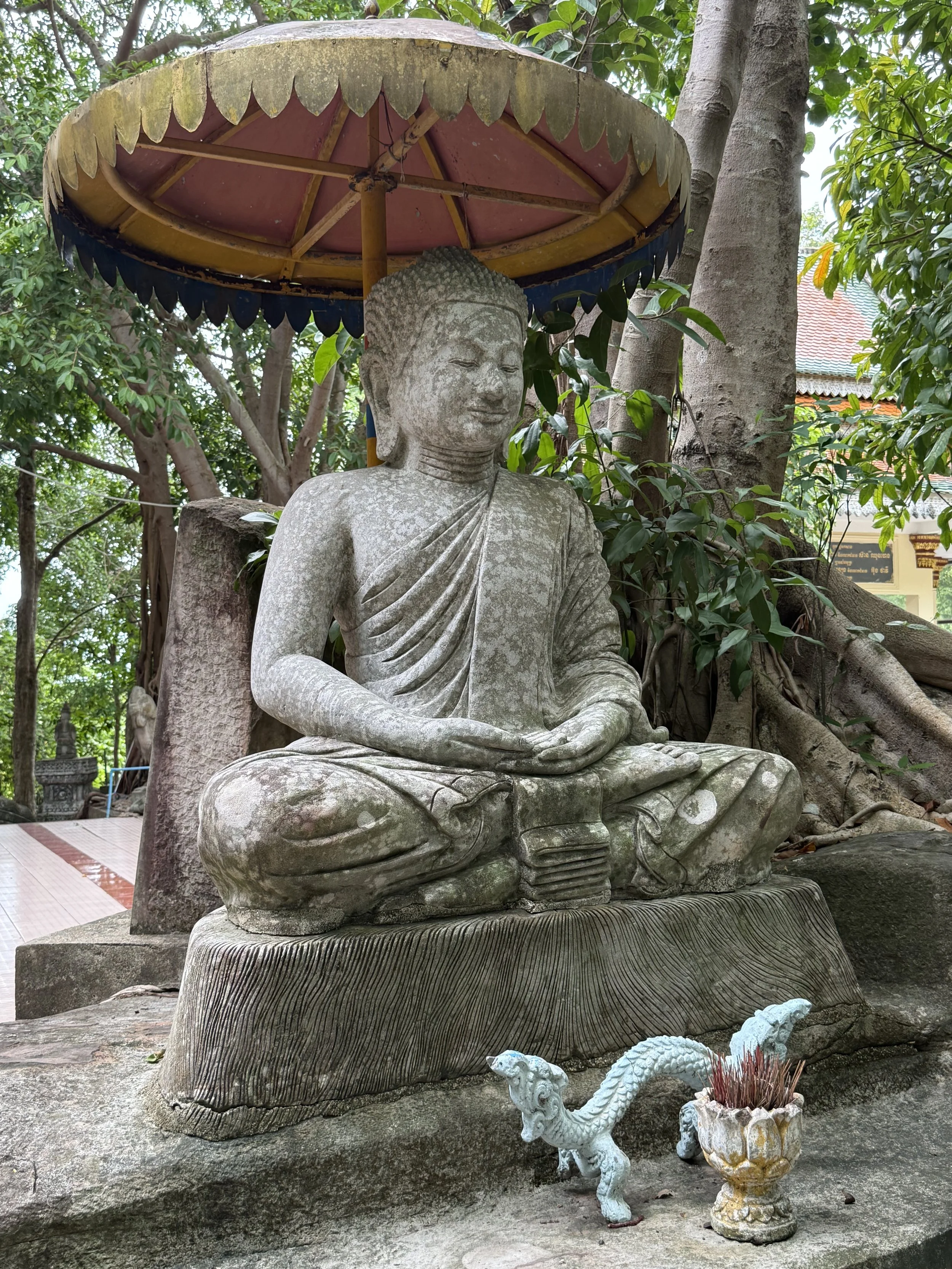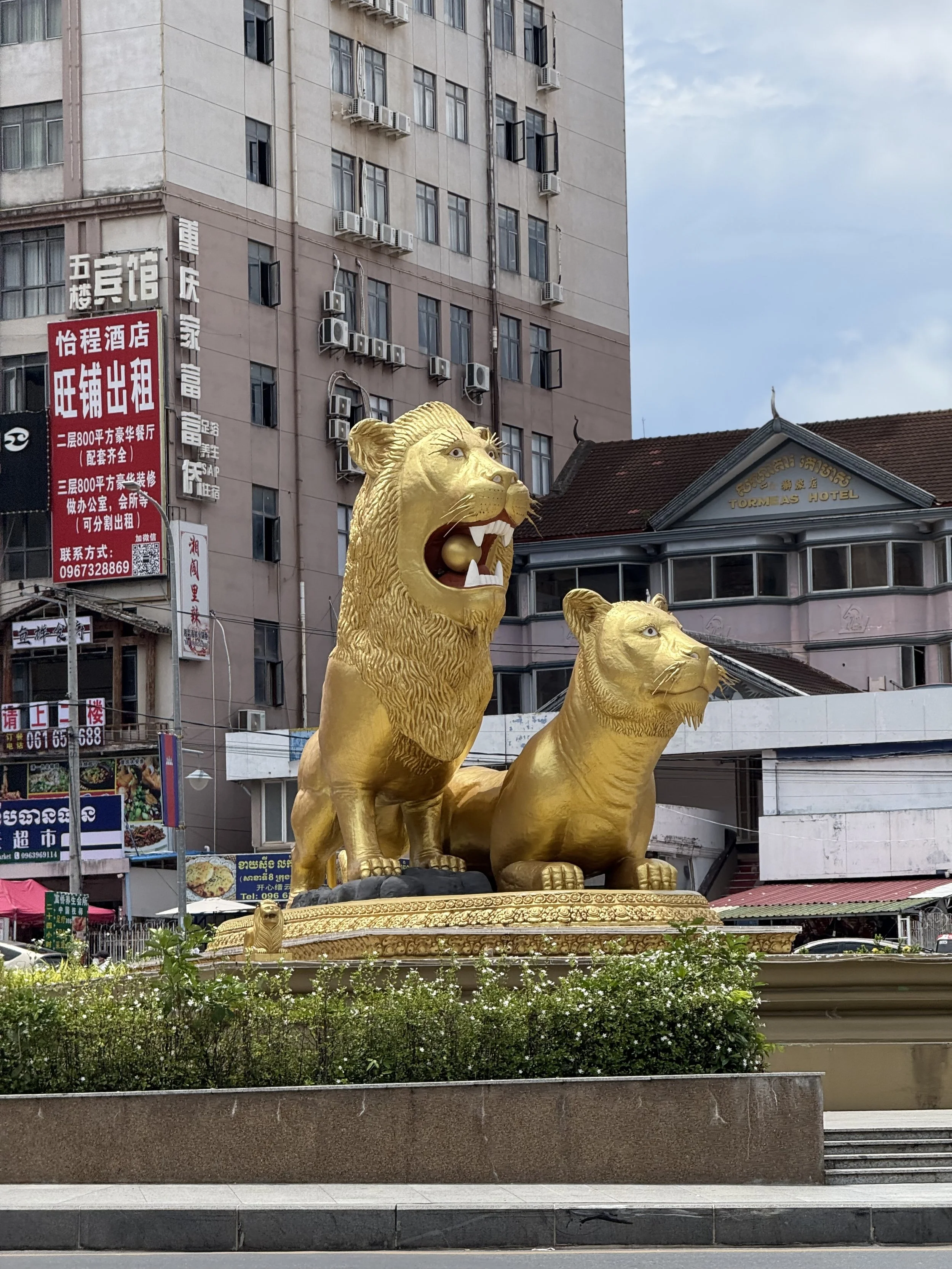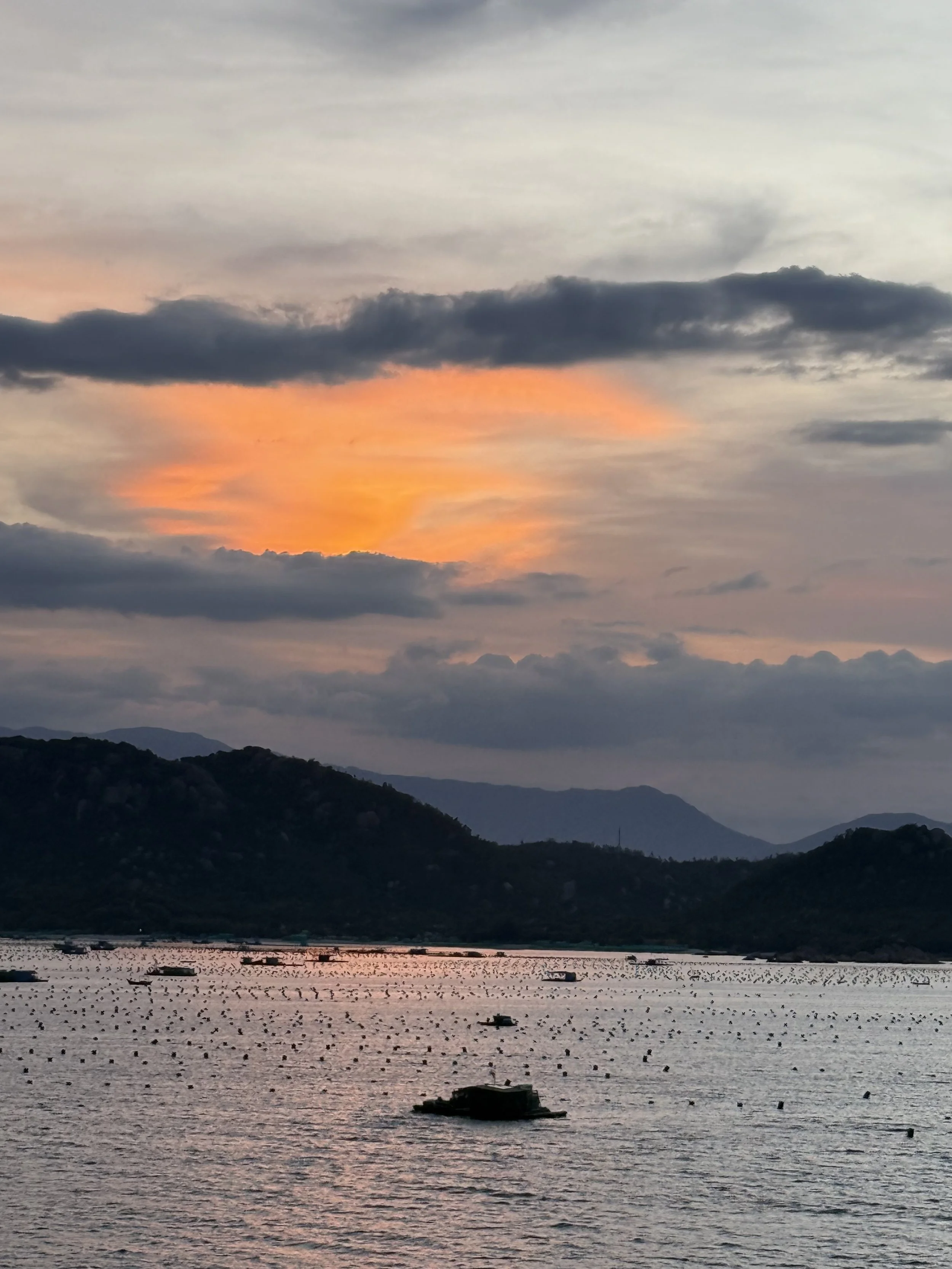Sihanoukville in a Day: Monks, Markets, and Mayhem
After several rough days quarantined with a stomach bug, we were more than ready to feel human again — and even more ready to feel land under our feet. Recovered and full of optimism (and electrolytes), we were thrilled to place our wobbly sea legs on some solid Cambodian terra firma. Destination: Sihanoukville — a coastal city on the Gulf of Thailand, where ancient traditions, Buddhist temples, beach resorts, and curious market smells all converge in one surprisingly quirky package.
Cambodia, nestled between Thailand, Laos, and Vietnam, is a place of deep cultural heritage, dense jungles, and deeply spiritual people. Over 95% of the population practices Theravada Buddhism, and this influence is visible everywhere — especially at our first stop: Wat Krom Pagoda.
Wat a Way to Start the Day
Our tour bus whisked us through the city to the beautiful Wat Krom, a fully operational temple perched on a small hill overlooking the sea. It was serene, stunning, and honestly, more gold than a rapper’s chain collection. We arrived just after the monks had their one meal of the day (seriously, one meal — we could never), and a group of women were cleaning up the dishes like a Buddhist Tupperware party.
The temple’s architecture was intricate and vibrant, with murals covering every inch of wall space. Between golden Buddhas (both sitting and reclining) and curious cats patrolling the grounds, we soaked in the calm before returning to the chaos.
An interesting cultural note: while monks are allowed to eat meat, they are forbidden to kill or process it themselves. Instead, they rely on the local community to provide food and support — a beautiful example of the reciprocal relationship between the monastic and lay communities in Cambodia.
Sidebar: A Day in the Life of a Cambodian Monk Monks in Cambodia live a highly disciplined life, starting their day before dawn with prayers and meditation. By sunrise, they walk barefoot through the streets to collect food offerings from locals. After their one daily meal, usually before noon, they spend the rest of the day in study, chores, and temple duties. The evening is reserved for more chanting and meditation. They live without material possessions and follow strict moral codes, focused on detachment, mindfulness, and community service. I
Into the Heart of the Whacky
Next up: the central market — aka sensory overload in a concrete box. Imagine every smell you've ever known, now mix them all together with heat, humidity, and a splash of mystery. Welcome!
We wandered through aisles packed with everything from gold jewelry and knockoff cosmetics to raw fish, insects on sticks, and eggs that may or may not have been from dinosaurs. A little girl played with a monkey (because why not?), and we spotted cages of live birds, piles of herbs, haircuts in progress, and some very brave snacking.
We didn’t buy anything — mostly because we didn’t dare take our hands out of our pockets. It was a cultural rollercoaster, and while we’re glad we experienced it... once was enough. Box checked!
Sprinkled and Blessed
Then it was on to another temple, where a monk was offering water blessings for anyone brave enough (or bendy enough) to kneel through it. Naturally, we were in. Our group — plus our ever-enthusiastic guide — kneeled as the monk chanted, flicked water, and showered us with flowers.
It was peaceful, spiritual, and only mildly painful on our Western knees. We’re now technically blessed, which we assume cancels out the questionable market air we inhaled earlier.
Lions, Legends, and Leftovers
Back on the bus, we cruised around the city, taking in massive statues in the roundabouts — golden lions, elegant elephants, and an enormous sculpture depicting Preah Thong and Neang Neak, a Cambodian folk legend of love and origin.
One less charming sight? The abandoned buildings. After a pre-COVID construction boom fueled mostly by Chinese investors (over 70% of developments), tedithe pandemic hit, and many simply walked away. The result: over 1,000 half-built, crumbling shells dotting the landscape. Some too damaged to salvage, too expensive to demolish, and now left to decay or be swallowed by jungle. A sad and eerie reminder of global missteps and economic overreach.
Beach, Beer, and Breathe Out
We ended our whirlwind tour with some much-needed downtime at a beach resort built on reclaimed land (a Cambodian specialty, apparently). There were pools, beach activities, and lots of sun — but no swimsuits. So, we kicked back with fresh coconut water and cold Cambodian beer, toasting our day of blessings, bizarre sights, and bucketloads of culture.
Sihanoukville may not be polished, but it’s packed with personality — a little chaotic, a little heartbreaking, but undeniably fascinating. One day was enough to leave us curious, humbled, and slightly sunburnt.
Next stop: hopefully one without mystery smells.
Until then... 🙏🌴🍺

